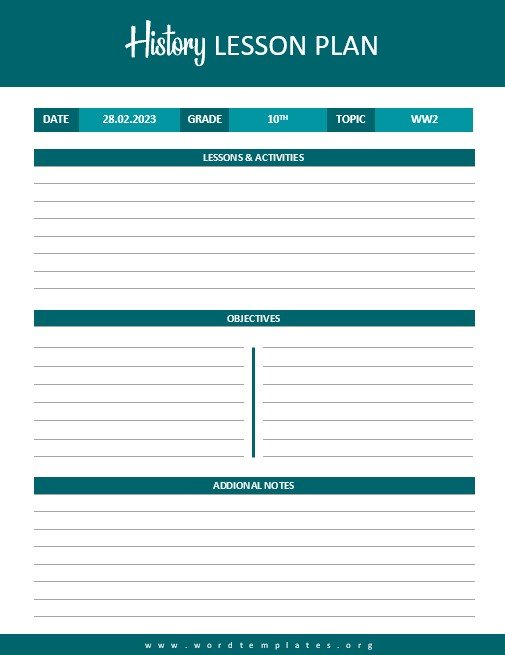There is some uncertainty concerning that what a lesson plan is and is not. There are many answers to this question like a worksheet cannot be a lesson plan. A brochure-type piece of paper is not a lesson plan. A classroom activity or goings-on is not a lesson plan. If truth be told, there is no need in support of a lesson plan suggesting itself to ever be seen, felt, measured, or dreamed of by students, and nor does it even need to be present on paper or diskette, despite the fact that it typically does. A lesson plan is a teacher’s sketch for teaching a lesson. It can be present in the teacher’s brain, on the back of a cover, or on one or more beautifully arranged sheets means to say that the lesson plan does not require a sophisticated protocol from the teacher. Its main point is to sketch out the “program” for a solo lesson for a single class. That’s why it is called a lesson plan. It lends a hand to the teacher in equal preparation and implementation of the lesson. To sum up the definition of the lesson plan it might be said that a lesson plan is the guide of the teacher for managing a specific lesson, and it includes the objectives of the learning too.
Advantages of History Lesson Plans:
In a history lesson, students will gain an outline of orientation for considering the history and be familiar with that the past is dissimilar depending on who is recalling and retelling it. The students will make a timeline based on dealings from their own lives and family record. This will give them an image that demonstrates the continuity of time. The students will also be capable to observe that their own individual past is different in the range from their family’s past, or different from the past of their country. Once they realize that history is fabricated by the different stories of many people of the past students will search how we know about events that occurred previous to our own beginning. This lesson plan also includes an interesting activity in which each student will make a dialogue with at least two family members about the same occasion and evaluate the two descriptions and write down or speak to their own version of the story, which becomes the “official” explanation. In this way, the students will understand the power of both actual accounts and historical records.
Free History Lesson Plan Templates:
Here is the preview of a Free History Lesson Plan Template created using MS Word.

Here is the download button for this amazing History Lesson Plan Template.

Click on this download button to get this amazingly-designed History Lesson Plan Template.
The history teacher should ask questions related to their homeland to develop a sense of research in them. Have you ever thought that why Texas is called a single Star state? Or why the national animal of Wisconsin is the badger? How about your own state signs? Here the teacher should use a variety of sources like a list provided by the teacher, and books to recognize the symbols like the state bird, state flag, and state animal. Select a symbol and utilize some different causes to find out its origins and describe how it is a symbol of the state. Once the students have completed their research the teacher should ask them to write a short description in which the student clarifies why this symbol was chosen to represent the state. How well do you (the student) think this symbol should represent the state?

MK Farooq, a Master’s degree holder in Computer Science, is driven by a passion to assist people in their daily tasks through the provision of high-quality documents and templates. With a strong foundation in technology and a keen understanding of documentation processes, MK Farooq has dedicated his career to simplifying the lives of individuals and businesses alike.
Leveraging his expertise, MK Farooq creates meticulously crafted templates and documents that cater to a wide range of needs, from project management to personal organization. His work is not just about providing tools but about empowering users to achieve efficiency and effectiveness in their endeavors.
